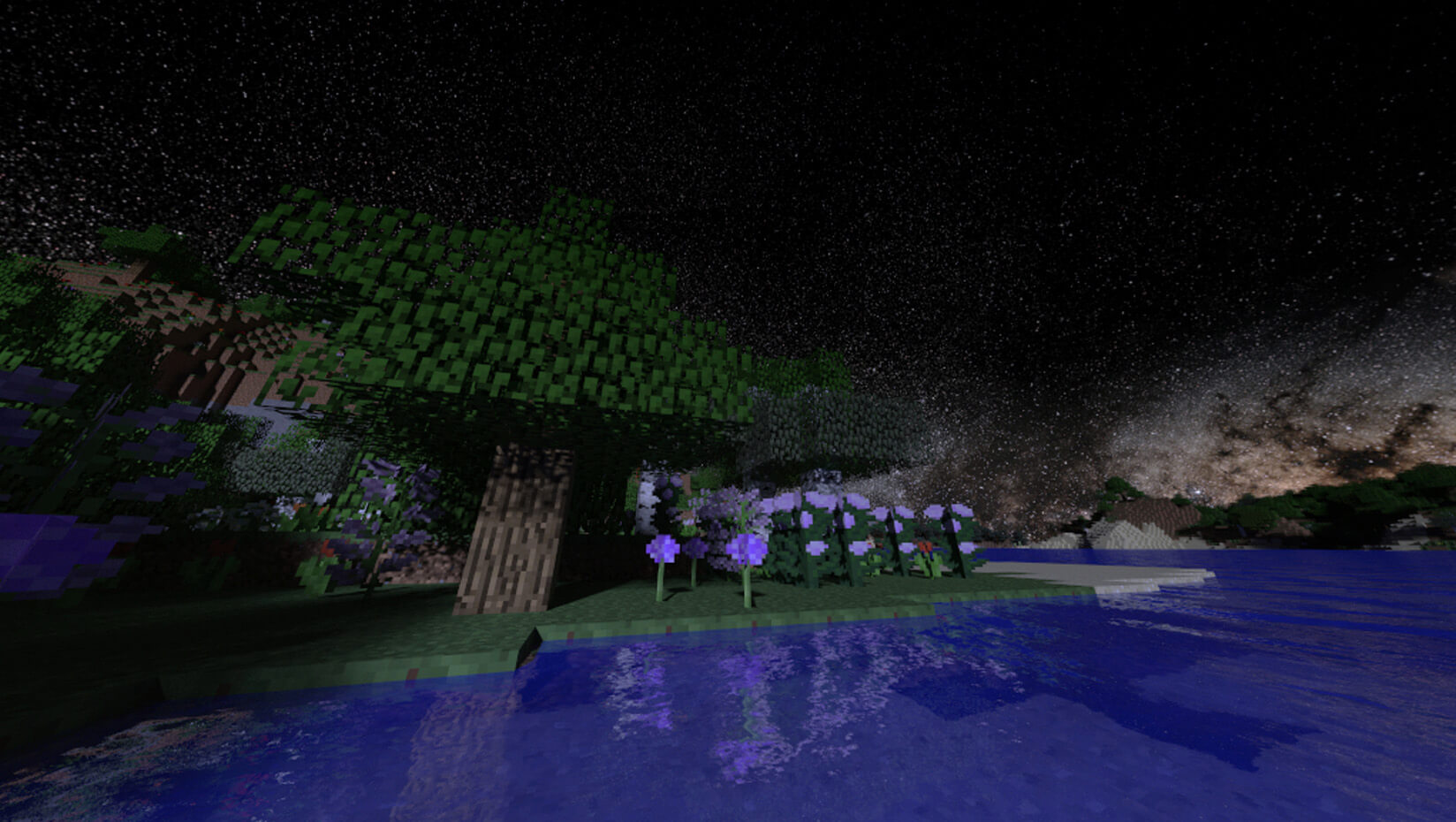
Crafting a moonless Earth: Growing STEM interest through ‘What-if’ simulations
What if you could explore, firsthand, an alternate Earth in which the moon did not exist? What if there were two moons? What might you observe if the Earth was larger or smaller, or perhaps if its atmosphere were thicker?
These are the experiences University of Maine astrophysicist Neil Comins and a team of researchers are working to bring to middle school learners through the virtual worlds of Minecraft.
Comins, a professor of physics and astronomy, has authored a number of books that consider a number of astronomical and astrophysical “what-if” scenarios, including what the Earth would be like if it did not have its moon. He’s also a researcher on What-if Hypothetical Implementations in Minecraft (WHIMC), a new project that aims to create engaging and exciting computer simulations designed to spark interest in science using the popular video game.
Since its release in 2009, Minecraft has been used increasingly by educators in diverse and creative ways as an informal learning platform. And in the coming decades, the researchers anticipate that a large portion of the nation’s scientists and engineers will attribute the game as a major influence in their career choice.
According to the researchers, the project was designed to address the need to better understand how modern technologies commonplace in the lives of young learners, like video games, can be used to promote engagement with science-related content. They hope to identify effective uses of Minecraft for learning and to better understand how it’s impacting a new generation of students’ relationship with science, technology, engineering and mathematics (STEM).
WHIMC’s interdisciplinary team of researchers is led by H. Chad Lane from the University of Illinois, Urbana-Champaign, and also includes Jorge Perez-Gallego from the Patricia and Phillip Frost Museum of Science in Miami, Florida.
Minecraft is an incredibly popular video game — the second most popular in the history of video games and boasts an overwhelming number of players with over 100 million worldwide. The game is best described as a virtual sandbox world generated from millions of Lego-like cubes, each of which represent a variety of resources and materials, and make up dozens of unique ecologies and environments. Within these near-infinite digital landscapes, players can explore, interact and create anything they want.
The game’s code is also modifiable, which allows developers to customize and extend the capabilities of the game, often in substantial ways. Through modifications, or mods, entirely new worlds with “rules” based in real-world data can be created and widely shared.
As a platform, Minecraft allows the researchers to build entirely new versions of Earth consistent with the laws of nature based on Comins’ what-if scenarios. Learners can then interactively observe the scientific consequences of astronomical changes to the environment, such as different gravitational pulls, day-night cycles, ocean and tide behaviors or extreme atmospheric conditions, directly.
Comins and the team’s goal is to enable participants to directly explore plausible, nonfictional what-if scenarios about the natural world, rather than simply hearing or reading about them.
For example, learners exploring a Minecraft version of a moonless Earth, might observe stronger winds, shorter trees and smaller mountains — according to Comins, each a likely consequence of an absent moon.
Then, based on their own understanding of physics or astronomy, participants could use these observations to propose scientific explanations for what they see as different.
In this case, the absence of the gravitational pull of the moon would increase the rate of Earth’s rotation, causing increased wind speeds. With higher winds, only shorter trees would survive and mountains would undergo higher rates of erosion, causing them to be smaller as well.
The research team plans to conduct the WHIMC study at the Patricia and Phillip Frost Museum of Science, the Children’s Museum in Indianapolis, Indiana, and the Champaign-Urbana Community Fab Lab and the Illinois Digital Ecologies and Learning Laboratory in Champaign, Illinois.
Through their research into the relationship between Minecraft and STEM learning, the researchers also hope to create new pathways into STEM for historically underrepresented audiences.
WHIMC is supported by a grant from the National Science Foundation’s (NSF) Advancing Informal STEM Learning (AISL) program, which seeks to develop and advance new approaches to STEM learning in informal environments, like museums, after-school programs and summer camps.
Contact: Walter Beckwith 207.581.3729
